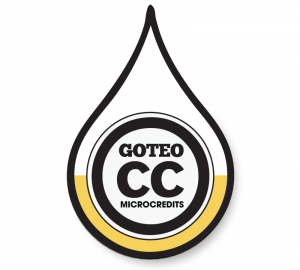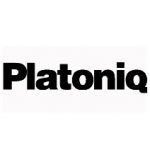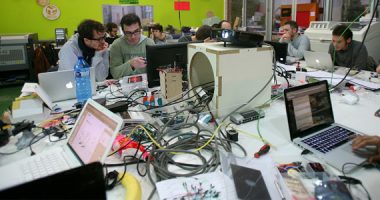
U.S. journalist and psychologist Daniel Goleman introduced the concept of “radical transparency” in his influential book “Ecological Intelligence: How Knowing the Hidden Impacts of What We Buy Can Change Everything.” “Both individually and collectively, if we knew exactly (…) the hidden impacts of what we buy, sell or produce, we could shape a more positive future by aligning our choices with our values. The methods for accessing these data are already part of the system. As this vital knowledge comes into our hands, we will enter an era of radical transparency. (…) As the control data change hands from sellers to buyers, companies should start preparing for change.
“ Today, this concept is spreading fast in the economic sphere, as companies of different sizes try to adapt to an unstable market with enormous changes brought by the Internet as a paradigm of communication between consumers.
Wikipedia defines radical transparency as an approach to management in which (ideally) all decisions are made in the public eye. (…) Goleman talks about the potential of ‘new technologies to reveal through radical transparency the eco-impact of the products we buy, it also has the potential to lead consumers to make better decisions and companies to reform their business practices.
In a speech at the conference Turning The Tide, publicist Alex Bogusky drew a comparison between the act of consuming and the act of voting, and how this ideal radical transparency could end up equating the action of voting with consumption: “radical transparency has the power to make us understand that acting is not necessarily done in a progressive, and little increasing capsules, but steadily, at any given the time of day. (…) This idea that when we buy, we vote, has existed for a long time but has never really worked. You cast the vote and then you realize that you were wrong, or that your vote did not go hand in hand with your values. Supply chains are very complicated and even if you specialize in a very specific part of the chain is difficult to do a relevant analysis. (…) The data for radical transparency are out there, closer than ever and that is a very powerful thing. If you join the transparency with the desire to turn every dollar you spend in one vote, you get the potential to change many things.”
This relatively new phenomenon that is forcing to change some rules for several multinational giants like Walmart and Nike (even it is also used as a marketing tool) has actually been present for a long time in many free and open software projects, and in other collaborative projects in the net (such as any wiki), that have traditionally implemented a policy close to the radical transparency. In an article on principles of peer-to-peer collaboration, The Foundation for P2P Alternatives emphasizes transparency in its second article. As a conclusion, the article stresses: “Things to avoid: secret data, secret trials, secret members, secret results.”
A Google search with the words “transparency business” today reveals a growing concern of the business sector to transmit transparency in their corporate policies and especially in their public relations. This trend (which, judging from the articles is often not much more than a marketing operation) seems to be a clear result of the emergence of social networks and media, in which (at least in theory) transparency is one of its pillars.
In the context of the new net economy models (crowdfunding, microfinance, p2p lending, etc.) transparency plays an important role at various levels. Many of the crowdfunding platforms currently available consider transparency and clarity as success factors and as their network requirements of individuals or institutions. That means transparency in all stages of funding (including the later stage, once the capital is raised). At the crowdfunding Kickstarter website, for example, once the deadline for funding a project expires, all information on this project (from their generic description to the details of its financing) remains online, according Kickstarter to favor transparency. Kickstarter also requires project managers to communicate at all times to their audience the stage of development of the initiative, especially in case of conflicting decisions that may affect the initial description or the date set for the project. At Kickstarter blog a project that got its economic objective scanned the tickets cost to show the backers where their money went (images here and here). Although this case is just a symbolic gesture, it actually shows widespread concern about possible abuses of the system of grants / loans. For p2p lending sites, the use of transparency is also crucial to eliminate suspicions of fraud that much of the public still maintain concerning NGOs, relief organizations and charities. Organizations like Kiva, for example, get a better response from potential users making public all its data, including fraud and default rates.
“For many people, the experience of art is shaped as a final product. Generally, the artist’s process remains invisible to the viewer and, frankly, this is one of the reasons that leads the public to think that art is merely a talent, not a job or a learned quality. Our intention was to bring this process to art lovers and fans of the artist. So we created the function ‘Studio’ in Society6. Supporters and partners can enter the virtual studio of the artist, where he/she can share both the process and the final result. If they take part on the development of artists and their work, we think we will increase the level of appreciation for both. (Interview to Society6 co-founder Justin Wills).
Similarly, transparency understood as clarity ( in which the applicant must explain its initiative to achieve the necessary economic goal) is also crucial in crowdfunding. Given the speed at which these platforms continue to multiply, and the large number of proposals that each shelters, crowdfunding culture has had to adapt to its own environment a key resource of the traditional business sector: the idea of the “elevator pitch“. Wikipedia defines it as: “The concept was created with the purpose of naming the speech necessary to explain briefly (the time of an elevator ride) everything about a business, company to those interested in the project are aware of the issue, investors, entrepreneurs, shareholders, customers, etc.. “The elevator is obviously a rhetorical figure, which symbolizes the brevity of speech (usually between thirty seconds to two minutes). Thus, in the context of a network to exchange ideas / investments such as Goteo or any other crowdfunding or microfinance platform, an elevator pitch is crucial to communicate an idea of the most effective possible way in the shortest time.
In recent years, the MIT holds an annual Elevator Pitch Contest in which students and researchers from various departments can briefly present their idea to a panel of invited investors to get the financial support they need. Tim Rowe, inversor, MIT Elevator Pitch Contest judge and member of the Cambridge Innovation Center explained in an interview why he launched the initiative “if you walk through the halls of an institution like MIT, it’s easy to find a teacher with a visitor, perhaps a venture capitalist. The teacher introduces you to the investor and he/she tells you that he/she is looking for ideas in which to invest. This is your moment. Scenes like this occur literally every day. If what you’re interested in is purely making money, you will probably end up in Wall Street. But if you’re hunting for ideas in the halls of MIT, and in meetings with the director of the chemistry department, chances are you’re the kind of person that besides economy is also concerned with the resulting product.” Rowe’s speech referred to the stereotypical profile of investor that can go to one of these events. As in other areas (the case of Wall Street that Rowe mentions, for example) getting close to a particular platform in search of projects is in fact a declaration of principles in itself, an indication that the investor not only wants to buy or invest in a potentially lucrative idea but also to associate their capital to a particular concept.
In the case of a center with the MIT trajectory, or a project that seeks to enhance the fields of cultural/technological and social innovation as Goteo, it’s easy to think that the profile of people interested in contributing collectively to an idea through donations is closely tied to some ideal of progress, advancement and social innovation. The key to this model is undoubtedly in connection with investors. It offers the opportunity to become actively involved, albeit by small amounts of money in an initiative that identifies potential investor as an interesting, rewarding and dignified cause.
Since its inception, the open source movement (one of the potential nodes of the user network Goteo) has based a great part of its strategies in collective and cooperative development. One of the major obstacles for many communities structured around open source initiatives in areas as diverse as web applications, artistic creation, business solutions, etc. remains the initial funding and its continuity for the initiative.
An interesting case study in this aspect is Joomla!, a popular content management system released under a GPL license. Joomla! emerged in 2005 from an amendment to a previous project called Mambo, owned by the Australian company Miro. It proposed to manage the project through a nonprofit organization, but the Mambo development team protested, claiming that the legal basis of the new organization violated the values of open source which until then had been the basis for its development. By creating the web page OpenSourceMatters.org, developers presented the situation to its community of users, designers and others involved. During the following weeks, with the support of thousands of individual users and the Software Freedom Law Center, the community grew to the point where it dissociated completely from Miro, leading to Joomla!, derived from the English pronunciation of “Jumla” ( “together”) of the swahili word. During the first year of Joomla! existence, the system was downloaded 2.5 million times, and five years later is still very popular.
The originating process for Joomla! is a good example of how a community of users using a network platform to exchange information about the project, collectively organizes a change of direction and support to an initiative they trust and believe in. Even more, by creating OpenSourceMatters.org the community grew, attracting users interested in the open source philosophy. A platform such as Goteo could act as a distributed financing solution for groups that require the support of a particular community. But it could also lead to a synergy between these communities of users of various projects, united by a common interest beyond specific initiatives, and act as an umbrella for uniting active groups, developers, citizens, users and agencies in adjacent areas of cultural, social or technological innovation.
Platoniq is an international organization of cultural producers and software developers, pioneer in the production and distribution of copyleft culture. Since 2001, it carries out actions and projects in which the social uses of Information Technology and Communication (ICT) and net work are applied to the development of communication, self-training and citizen organization. The result of its work creates innovative software applications and methodologies, plus an extensive audiovisual archive online under a free Internet license.
Since 2003, the group is collaborating group of the Centre de Cultura Contemporania de Barcelona and, in recent years, has won two international awards for the project Burn Station (2004), the Mexico City Transitio Festival and Digital Culture Transmediale Festival in Berlin and an honorable mention in the UNESCO Digital Arts Awards.
Among its projects there is also Banco Comun de Conocimientos(2006), a platform for sharing knowledge, the streaming public server OpenServer, the organization of temporary media labs, Media Space Invaders (2003-2004), and the creation of copyleft first license in the Spanish legal framework, Aire Incondicional (2004).
Platoniq is recognized from its beginnings as being pioneer in the design of tools for citizen empowerment and social innovation, disseminated in innovation conferences and digital culture festivals and implemented in organizations such as the Grupo Mondragón del Pais Vasco and many educational spaces around Europe , Asia and Latin America.





Leave a comment